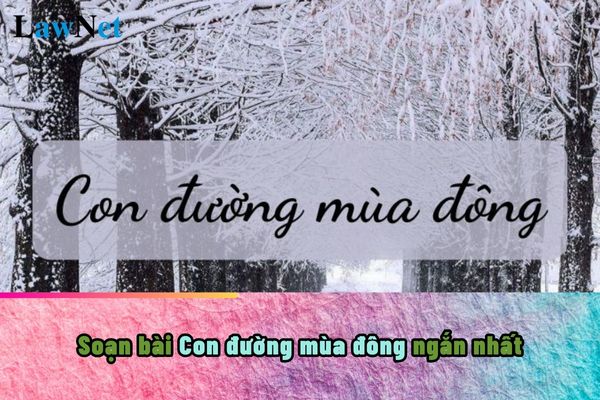What are guidelines on preapring the lesson plan for "The Winter Road"? What are on the list of grade 11 textbooks in Vietnam?
What are guidelines on preapring the lesson plan for "The Winter Road" according to Literature curriculum in Vietnam?
"The Winter Road" is one of the texts that students will study in the grade 11 Literature program.
Grade 11 students can refer to the following guidelines on preapring the lesson plan for "The Winter Road":
|
Preapring the lesson plan for "The Winter Road" * Introduction: |
Note: Information is for reference purposes only./.

What are guidelines on preapring the lesson plan for "The Winter Road"? What are on the list of grade 11 textbooks in Vietnam? (Image from Internet)
What are on the list of grade 11 textbooks in Vietnam?
According to the list of grade 11 textbooks used in general education institutions issued under Decision 4607/QD-BGDDT, 2022, the list of all grade 11 textbooks for the academic year 2024-2025 approved by the Minister of Education and Training includes the following books:

What are procedures for selecting textbooks in Vietnam?
Based on Article 7 Circular 27/2023/TT-BGDDT, the procedures for selecting textbooks in Vietnam are as follows:
Step 1: The Council develops a plan to organize the selection of textbooks for the educational institution; assigns tasks to Council members.
Step 2: Organize the selection of textbooks at the professional group level
- Based on the Council's plan and the criteria for selecting textbooks, the head of the professional group develops a plan to organize the selection of textbooks for each subject structured within the professional group and reports to the head before implementation;
- Organize all subject teachers in the educational institution (including permanent, contractual, seconded, visiting, cross-school teachers) to participate in selecting textbooks for that subject;
- At least 20 days before the first meeting of the professional group, the head of the professional group organizes teachers to review the textbooks, write review notes, and evaluate textbooks according to the selection criteria;
- The head of the professional group organizes meetings with subject teachers to discuss and vote on selecting one (01) textbook for the subject. If only one textbook for a subject is approved by the Minister of Education and Training, the professional group selects it without voting.
The selected textbook must be chosen by at least 1/2 (half) of the subject teachers.
If no textbook achieves at least 1/2 (half) of the teachers' votes, the professional group must discuss and vote again; the selected textbook is the one with the highest number of votes in the second voting.
In both (02) voting rounds, if there are (02) textbooks with an equal highest vote count, the head of the professional group decides on one of the textbooks.
Meetings of the professional group are recorded with detailed comments and evaluations from participating teachers; the minutes are signed by the head and the appointed recorder;
- The head of the professional group compiles the results, prepares the list of textbooks selected by the professional group, signed by the head and the appointed list maker.
Step 3: The Council meets, discusses, evaluates the organization, selection of textbooks by professional groups; reviews meeting minutes, review notes, evaluation forms; compiles results into minutes signed by the Chairman and Secretary.
Step 4: The Council proposes to the head the list of textbooks chosen according to the regulations.
Step 5: The educational institution prepares a selection dossier to send to the Department of Education and Training (for primary and lower secondary levels), the Department of Education and Training (for upper secondary level). The dossier includes:
- Decision to establish the Education Council;
- Council meeting minutes as required;
- List of textbooks selected by the educational institution.
* Educational institutions include primary schools, lower secondary schools, upper secondary schools, multi-level schools, continuing education centers, vocational training - continuing education centers, and institutions implementing the general education program, continuing education program at the lower and upper secondary levels (clause 2, Article 1 Circular 27/2023/TT-BGDDT).

